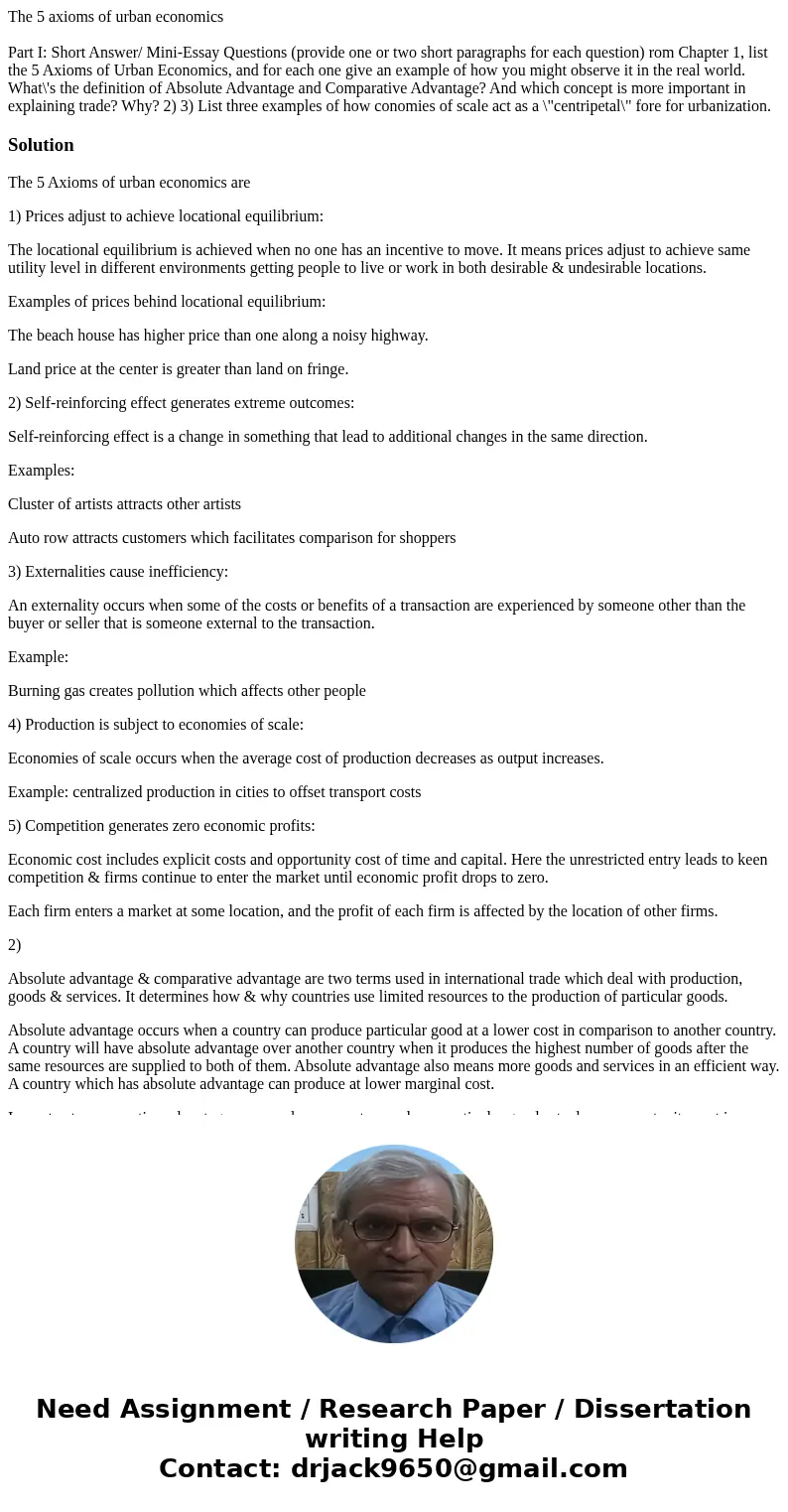The 5 axioms of urban economics Part I Short Answer MiniEssa
Solution
The 5 Axioms of urban economics are
1) Prices adjust to achieve locational equilibrium:
The locational equilibrium is achieved when no one has an incentive to move. It means prices adjust to achieve same utility level in different environments getting people to live or work in both desirable & undesirable locations.
Examples of prices behind locational equilibrium:
The beach house has higher price than one along a noisy highway.
Land price at the center is greater than land on fringe.
2) Self-reinforcing effect generates extreme outcomes:
Self-reinforcing effect is a change in something that lead to additional changes in the same direction.
Examples:
Cluster of artists attracts other artists
Auto row attracts customers which facilitates comparison for shoppers
3) Externalities cause inefficiency:
An externality occurs when some of the costs or benefits of a transaction are experienced by someone other than the buyer or seller that is someone external to the transaction.
Example:
Burning gas creates pollution which affects other people
4) Production is subject to economies of scale:
Economies of scale occurs when the average cost of production decreases as output increases.
Example: centralized production in cities to offset transport costs
5) Competition generates zero economic profits:
Economic cost includes explicit costs and opportunity cost of time and capital. Here the unrestricted entry leads to keen competition & firms continue to enter the market until economic profit drops to zero.
Each firm enters a market at some location, and the profit of each firm is affected by the location of other firms.
2)
Absolute advantage & comparative advantage are two terms used in international trade which deal with production, goods & services. It determines how & why countries use limited resources to the production of particular goods.
Absolute advantage occurs when a country can produce particular good at a lower cost in comparison to another country. A country will have absolute advantage over another country when it produces the highest number of goods after the same resources are supplied to both of them. Absolute advantage also means more goods and services in an efficient way. A country which has absolute advantage can produce at lower marginal cost.
In contrast, comparative advantage occurs when a country produces particular goods at a lower opportunity cost in comparison to other countries. In other words it is the ability of a country to produce a certain product better than another country. It compares the output of production of the same type of goods or services between two countries. A country with comparative advantage can produce at lower opportunity cost.


 Homework Sourse
Homework Sourse